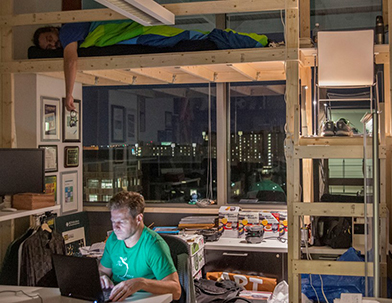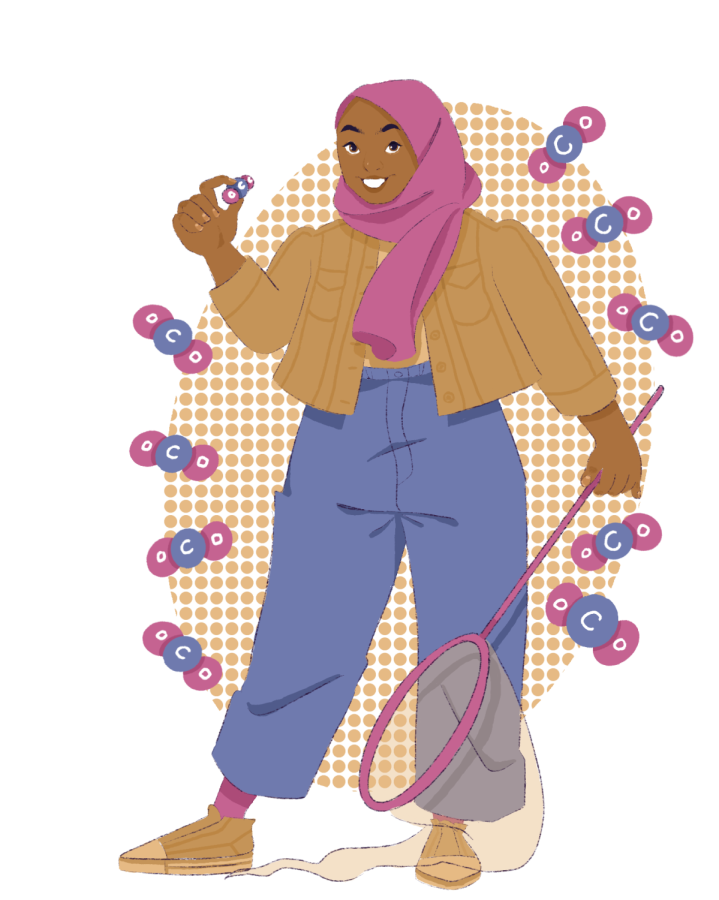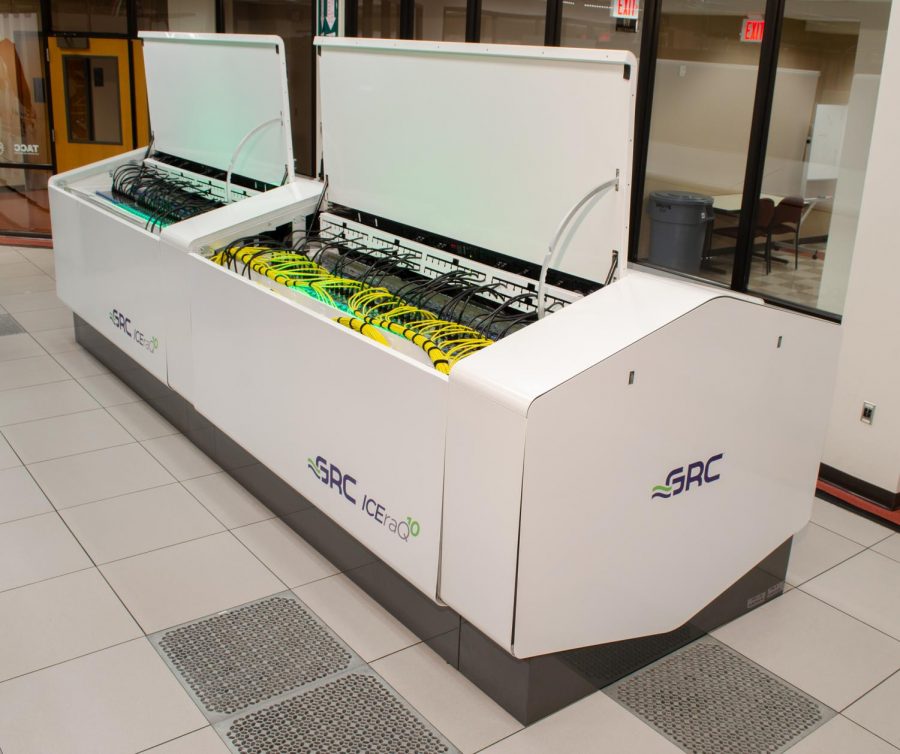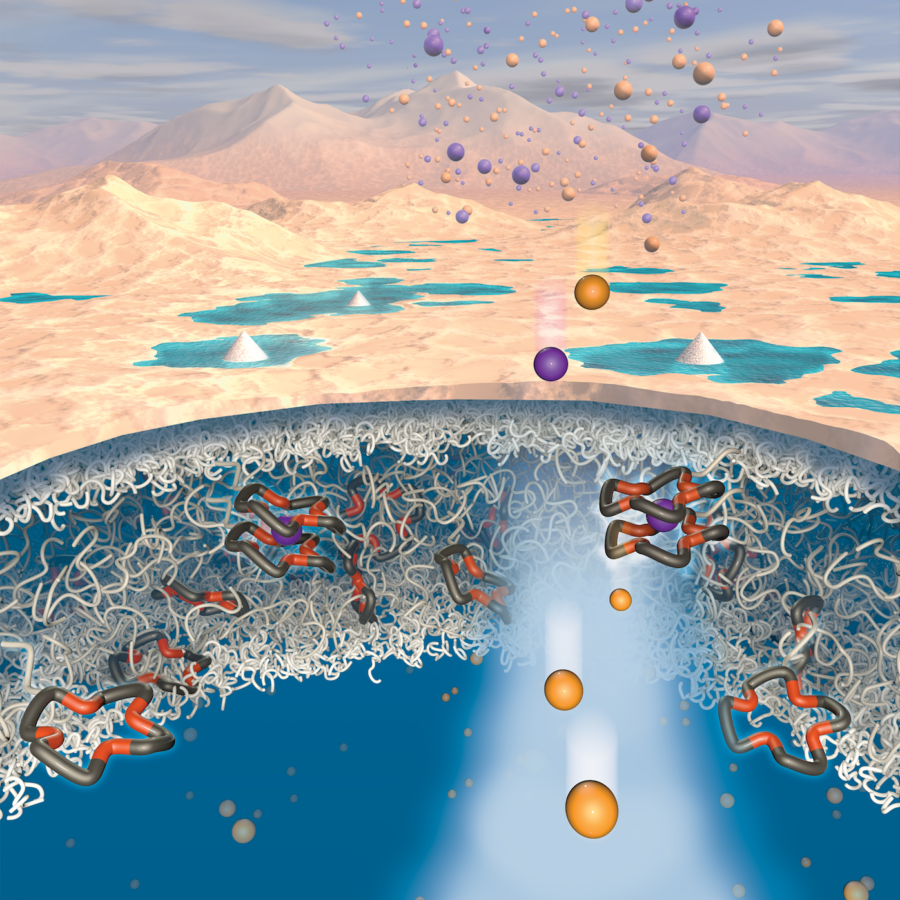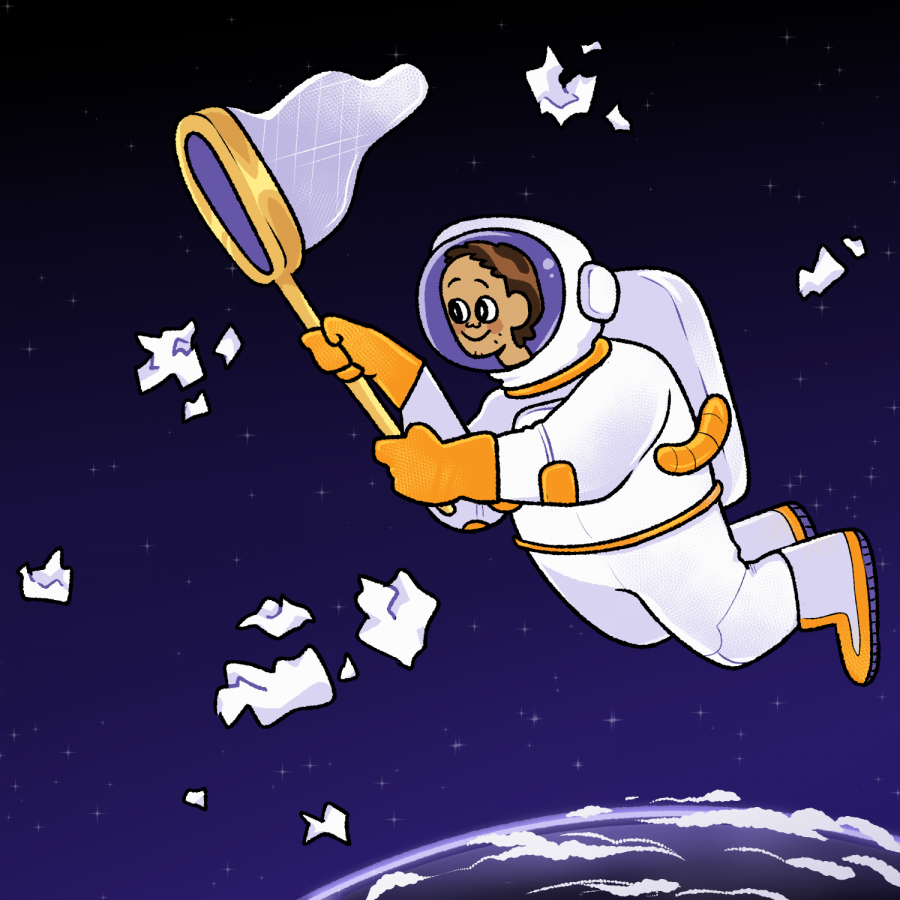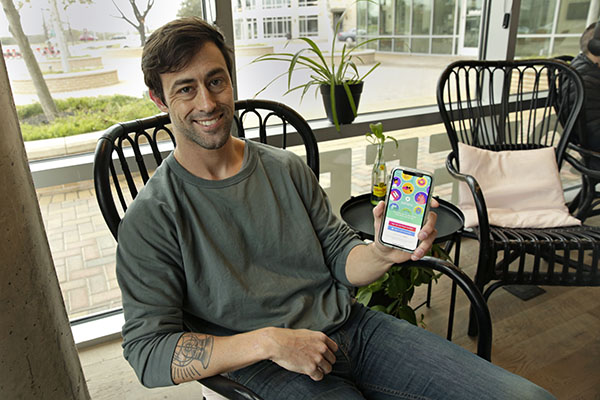UT chemical engineering professor Brian Korgel has always had a creative side. As the director of education and outreach at UT’s Center for Dynamics and Control of Materials, he has used his creativity to establish Arts + Sciences, a program that aims to bring artists directly into the research process of scientists and engineers.
Arts + Sciences was inspired by a chance meeting in 2014 at an Innovation Workshop hosted by the Skolkovo Institute of Science and Technology in Moscow between Korgel and an artist named James Sham.
“James had this idea of having artists collaborate with scientists and engineers to speed the innovation process, and I had never thought about that before meeting him,” Korgel said. “I never went, ‘Oh yeah! I need to talk to a bunch of artists and find out what they’re working on!’”
That meeting sparked an idea that came to fruition on the sixth floor of UT’s Norman Hackerman building, home to the Korgel Research Group. Sham came to UT as an artist in residence, and Korgel put him to work with Vikas Voggu, one of Korgel’s former Ph.D. students, whom Korgel described as one of his best students, and an “all-A superstar.”
“Vikas was very skeptical in the beginning,” Korgel said. “He was like, ‘Oh, my God, why are you doing this to me!’, but he really embraced it.”
For Voggu, the experience showed him that the difference in the way artists and scientists approach problems is a driving force behind innovation.
“I had to explain to (Sham) what was going on at each step of the process, and I was actually able to come up with new ideas because of that,” Voggu said.
If innovation was the goal, then the pair succeeded. Their research on paper photovoltaics was awarded the Graduate Student Paper of the Year in 2017.
“I saw my student go through this transformation, and it was cool to see James, also, as an artist, wanting to get closer to science and technology,” Korgel said.
Korgel has also experienced this firsthand. In 2017, he collaborated with artist Daniel Bozhkov, who suggested building a loft in Korgel’s office.
“(Korgel) was open to the idea, which would not have been realized without his ability to take risks,” Bozhkov said. “The coexistence allowed us to have interactions and a level of conversation that would have been impossible otherwise.”
The vertical separation allowed them to work together in the office at the same time. In addition to transforming into a collaborative working space, it also served as Bozhkov’s home for four months.
“That’s his robe,” Korgel said, pointing to a robe still hanging from a hook on the wall of his office as evidence. “There’s a shower on the ground floor.”
Korgel and Bozhkov even got into a daily routine of getting breakfast tacos every morning from the Gates Dell Complex right across from them on Speedway.
“We would sit and plan our day,” Bozhkov said. “We would talk about the daily tasks related to our project, then shift the conversation to artworks that are housed in (GDC), such as the great wall painting by Sol Le Witt near the atrium.”
Then, they would have their daily lessons on quantum mechanics and nanotechnology, which is what Korgel’s lab focuses on, and provided the foundation for Bozhkov’s work called Advanced Nano Technology for Beginners.
“(Korgel) is a clear thinker and good communicator,” Bozhkov said. “He had found a way to refashion a new language to be able to explain complex ideas to a person without a background in the field.”
Korgel said that not only did he learn a lot about collaboration through this experience, but that the National Science Foundation also liked it, which allowed him to apply for a grant and renew the program for another six years.
Bozhkov said that encountering Korgel’s work ethic, ability to focus, tenacity and commitment to his work was life-changing.
“I learned to explore any idea, even the most impossible one, with determination, and to the bitter end,” Bozhkov said. “I was moved by (Korgel’s) respect for other people’s time and work — he usually responds to a message within two hours, no matter how busy he is, and he is always able to find time to answer a question, or advise.”
Bozhkov added that he thought Korgel had awakened another side of himself as an artist.
“This was a powerful experience, and very inspiring for me to witness,” Bozhkov said. “I feel that maybe our daily conversations have rekindled in him an old and genuine enthusiasm for art-making, and now I am looking forward to seeing Brian Korgel’s next artworks.”



